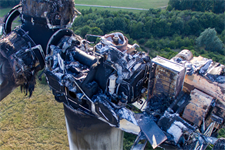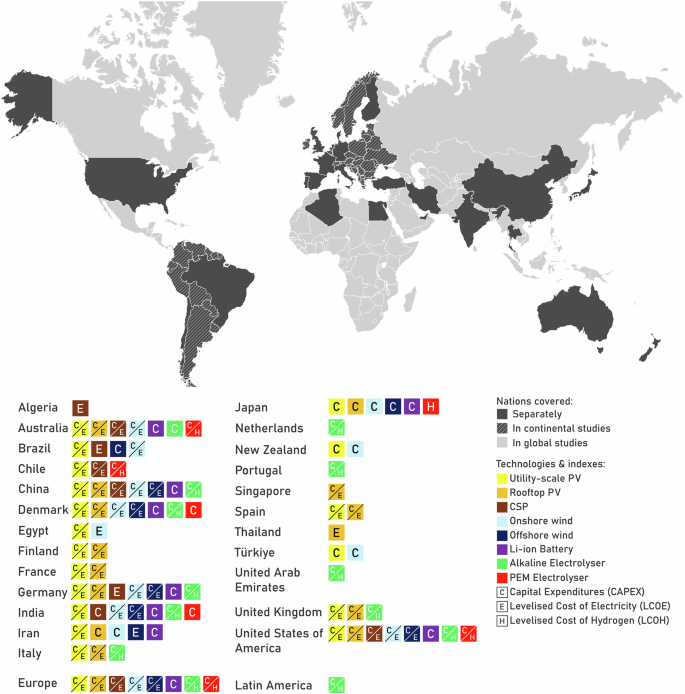Report on Arson Attack on Wind Turbine and Implications for Sustainable Development Goals
1.0 Incident Summary
A report from the police force in Northern Ireland has confirmed a deliberate act of arson targeting renewable energy infrastructure. The key details of the incident are as follows:
- Event: Arson attack.
- Asset: A wind turbine.
- Location: Northern Ireland.
- Date: Thursday.
- Outcome: The asset was reported as “completely destroyed.”
2.0 Analysis of Impact on Sustainable Development Goals (SDGs)
This destructive act has significant negative implications for the advancement of several key United Nations Sustainable Development Goals (SDGs), particularly those related to energy, climate, and justice.
2.1 Direct Conflict with SDG 7: Affordable and Clean Energy
The primary impact of this event is the direct obstruction of progress towards SDG 7. The destruction of a wind turbine represents a tangible loss of clean energy generation capacity.
- The incident directly contravenes Target 7.2, which aims to substantially increase the share of renewable energy in the global energy mix.
- Such attacks on green infrastructure can deter future investment in renewable energy projects, hindering the transition to sustainable energy systems.
2.2 Setback for SDG 13: Climate Action
The loss of this asset is a setback for climate change mitigation efforts, undermining SDG 13.
- Wind turbines are critical tools for reducing greenhouse gas emissions by displacing energy generated from fossil fuels.
- The destruction of this infrastructure negates its contribution to climate action and represents a direct assault on efforts to build resilience against climate-related hazards.
2.3 Broader Implications for Community and Institutional Goals
The arson attack also impacts wider societal goals related to sustainable communities and justice.
- SDG 11 (Sustainable Cities and Communities): The act compromises the resilience and sustainability of local infrastructure, weakening the community’s capacity to rely on sustainable and modern energy services.
- SDG 16 (Peace, Justice and Strong Institutions): This criminal act is an attack on public and private property, undermining peace and security. The necessary police response underscores the importance of effective institutions to address crime and protect critical infrastructure that supports sustainable development.
Analysis of SDGs, Targets, and Indicators
-
Which SDGs are addressed or connected to the issues highlighted in the article?
- SDG 7: Affordable and Clean Energy: The article’s central subject is a wind turbine, which is a critical infrastructure for generating clean and renewable energy. The destruction of this asset directly relates to the goal of ensuring access to sustainable energy for all.
- SDG 13: Climate Action: Wind turbines are a key technology for mitigating climate change by providing an alternative to fossil fuels. An attack on this infrastructure is an attack on efforts to combat climate change and its impacts.
- SDG 9: Industry, Innovation and Infrastructure: A wind turbine represents a form of sustainable and resilient infrastructure. The article discusses its complete destruction, which is a setback for the goal of building and maintaining such infrastructure.
- SDG 16: Peace, Justice and Strong Institutions: The article explicitly states the turbine was destroyed by an “arson attack,” which is a violent crime. This connects directly to the goal of promoting peaceful societies, providing access to justice, and building effective institutions (like the police force mentioned) to handle such crimes.
-
What specific targets under those SDGs can be identified based on the article’s content?
- Target 7.2: “By 2030, increase substantially the share of renewable energy in the global energy mix.” The destruction of a wind turbine is a direct impediment to achieving this target as it reduces the capacity for renewable energy generation.
- Target 9.1: “Develop quality, reliable, sustainable and resilient infrastructure…to support economic development and human well-being.” The arson attack undermines this target by destroying a piece of sustainable infrastructure and highlighting its vulnerability (lack of resilience to attack).
- Target 16.1: “Significantly reduce all forms of violence and related death rates everywhere.” Arson is a violent crime and a form of destruction. The event described in the article is an example of the violence this target aims to reduce.
-
Are there any indicators mentioned or implied in the article that can be used to measure progress towards the identified targets?
- Implied Indicator for Target 7.2: The article implies a negative impact on what would be measured by Indicator 7.2.1 (Renewable energy share in the total final energy consumption). By stating the turbine was “completely destroyed,” it signifies a reduction in the operational capacity of renewable energy sources, which would negatively affect this indicator’s measurement for the region.
- Implied Indicator for Target 16.1: The report of an “arson attack” serves as a data point for indicators measuring crime and violence. This event would be recorded in national crime statistics, which are used for Indicator 16.1.3 (Proportion of population subjected to physical, psychological or sexual violence in the previous 12 months) or other national indicators tracking violent crimes like arson. The mention of the “police force” implies the activation of justice institutions whose effectiveness is also measured under SDG 16.
-
Create a table with three columns titled ‘SDGs, Targets and Indicators” to present the findings from analyzing the article. In this table, list the Sustainable Development Goals (SDGs), their corresponding targets, and the specific indicators identified in the article.
SDGs Targets Indicators SDG 7: Affordable and Clean Energy 7.2: Increase substantially the share of renewable energy in the global energy mix. The article implies a negative impact on Indicator 7.2.1 (Renewable energy share) by reporting the destruction of a renewable energy source. SDG 9: Industry, Innovation and Infrastructure 9.1: Develop quality, reliable, sustainable and resilient infrastructure. The destruction of the wind turbine is a negative event related to indicators measuring the resilience and operational status of sustainable infrastructure. SDG 16: Peace, Justice and Strong Institutions 16.1: Significantly reduce all forms of violence. The “arson attack” is a data point for national crime statistics that inform indicators like 16.1.3 (Proportion of population subjected to violence).
Source: windpowermonthly.com







